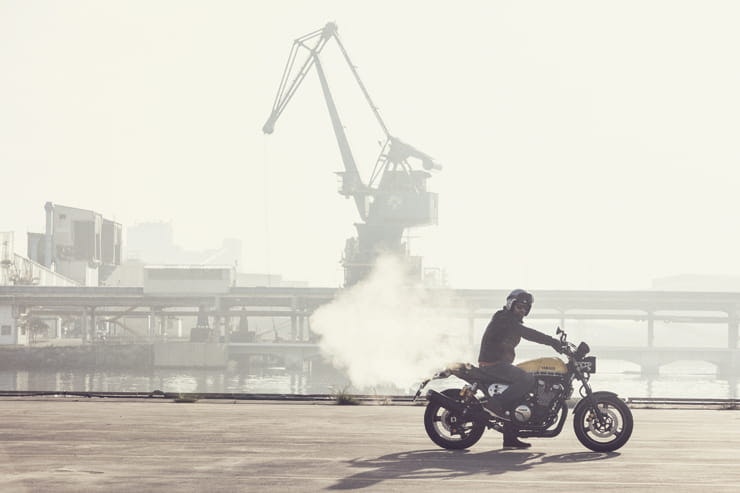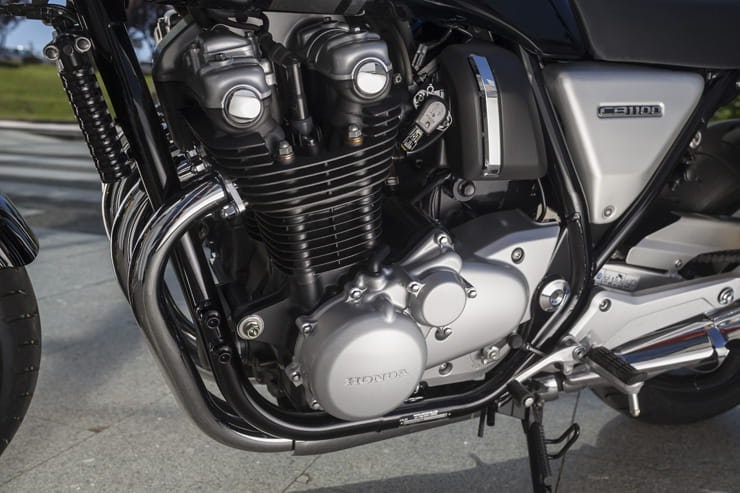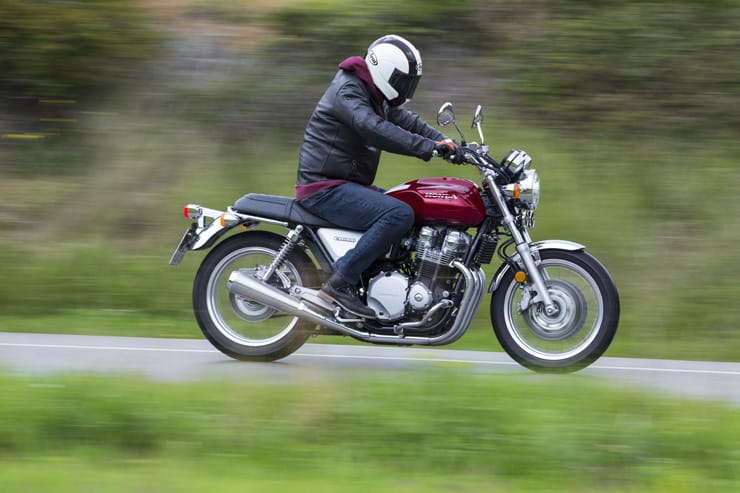Explained: Air-Cooling Technology vs Euro4
BikeSocial Road Tester
19.07.2017
When Yamaha announced the retirement of the XJR1300 last year – a model with an engine lineage stretching back to 1984’s FJ1100 (or even further into XS1100 prehistory, if you squint) – it was widely assumed to be because its air-cooled motor was unable to meet strict new Euro 4 emissions legislation. It was, basically, too dirty.
We say ‘assumed’ because although Yamaha (and other manufacturers) may have hinted broadly Euro 4 was to blame, no-one officially, explicitly said it.
And the reason they didn’t bang on about it is because it’s not strictly true. If anyone says Euro 4 means their air-cooled engine can’t be persuaded to conform against tighter emission controls, they’re fibbing. They just don’t want to try hard enough.
Because why, for example, can Honda can still build the un-liquid-cooled CB1100EX and RS? And BMW’s R nineT engine seems perfectly happy to bomb about chilled by nothing but oil and air. Ducati’s Monster 797 and Scramblers are equally hydrophobic, as is – well, everything Moto Guzzi. And Harley Sportsters and Dynas. I mean, come on Yamaha – even your own, current, SCR950 is Euro 4-compatible. So it can be done.
One answer comes when we compare the specs of two similarly air-cooled motors: say, while were talking about them, Honda’s new CB1100 and Yamaha’s XJR1300. Both are 16-valve inline fours. The Yam has a larger capacity – 1251cc v 1140cc – but a shorter stroke and wider bores (the Honda’s bore/stroke ratio is 1.094 against the Yamaha’s 1.238). One effect of this – although it may be minimal – is the smaller the piston area exposed to combustion, the less heat is transferred into the cylinder. And heat is at the heart of the air-cooled engine’s struggle to pass Euro 4 emissions targets.
One of the problems with air-cooling is heat build-up in certain areas, mostly around the exhaust ports and spark plug area. A liquid-cooled motor keeps temperature more even – and a stable combustion chamber temperature is critical for knowing exactly how little fuel you can get away with injecting without running too lean and damaging the motor.
In the old, pre-Euro legislation days, engineers could let carbs throw fuel around and use it to control engine temperature without worrying about how much made its way into the atmosphere, burned, part-burned or neat. But when you’re forced to be parsimonious in the extreme with your fuel, combustion temperatures need liquid-cooling for stability.
And not just combustion that relies on using fuel to maintain temperature – the catalyst in the exhaust is, effectively, a second engine. It has to keep to a constant, fairly precise temperature to function properly and remove pollutants from exhaust gas, otherwise it’s useless. And it needs to do it from cold start-up on a freezing winter day to down-shifting on a closed throttle on a mid-summer mountain hairpin. That wide range of working temperature – downstream of the cylinders – requires both rapid engine warm-up and effective engine cooling; a water-jacket can do both (limiting flow to speed up warming as well as being better at whisking heat away) better than air-cooled fins. Even if, like the CB1100, you have them on the spark plug mounts.
And of course another good way to control engine heat – or at least make it easier to manage – is to have less of it. Which also means, thanks to the second law of thermodynamics, less power and torque, too. So if you tune your engine to be less powerful, it will (all other things being equal) also be less hot. Less heat to manage gives engineers a wider window to maintain optimum fuelling.
And Honda’s 1140cc CB engine is certainly less: a claimed 88bhp @ 7500rpm while the XJR’s bigger 1251cc motor makes 98bhp @ 8000rpm sounds about right given the engine size difference – but look at the torque figures: the XJR makes 80 lb.ft peaking at 6000rpm; the CB makes 67 lb.ft at 5500rpm. The Honda engine is in a low state of tune, and that makes it easier to keep clean (at least on the inside). Or, put another way, to get their XJR1300 through Euro 4, Yamaha would’ve had to significantly detune it to the point of being ruined.
All this suggests a manufacturer must have pretty compelling reasons to stick with air-cooling; in many ways it’s simpler instead to redesign your engine to be liquid-cooled and then spend a fortune trying styling to look air-cooled. It’s what Triumph have done with the new Bonneville range and their old Thunderbirds. And what Harley have done with the Milwaukee-Eight motor – and even Yamaha did it themselves, in 1998 with the Fazer 600; it was a watercooled Thundercat motor with fins added for (very good) effect.
But overriding all those considerations is another, powerful, reason: some riders value tradition above all else. Harley baulked at liquid-cooling for years, well aware of customer resistance. Moto Guzzi still do – opting instead to rely on the transverse V-twins’ natural exposure to fresh air (and casting air-ducts into the cylinder head, around the exhaust valve stems) to maintain their classic appeal.
And, of course, plenty of engine designers still prefer the aesthetic of air-cooling: Mr Mitsuyoshi Kohama was the CB1100 Chief Designer: “When asked to explain my choice,” he says, “I could only say a lot of customers like air-cooled engines. I like the metallic sound the engine makes as it cools. A motorcycle engine should have oil in it, not water. Just looking at the cooling fins inspires me. There is something about an air-cooled engine – a feeling you simply can’t get from the liquid-cooled engine in a high-performance bike.”
Which is all very well – just don’t expect a whole lot of performance from your air-cooled Euro 4 motor. Honda’s Mitsuyoshi Kohama again: “Going with an air-cooled engine was bound to seem ‘retro’ to people at Honda, which had long favoured liquid-cooled systems in the pursuit of maximal performance. The amazing thing about Honda’s engineers is that, once they establish an objective, they never quit until they fulfil it. Had the objective been horsepower, there would have been no problem whatsoever. In striving to bring true joy to CB1100 customers, there were things more important to us than horsepower.”
Fair enough. But air-cooling isn’t out of the woods and into the breeze just yet. Because chances are not even Honda will be able to get air-cooled engines past super-tough Euro 5 restrictions due in 2020 – when that really will put the ‘fin’ in air-cooling.
Share on social media:


